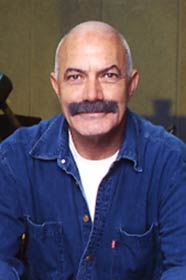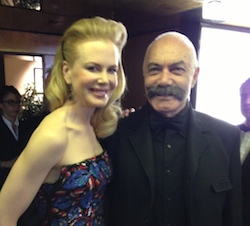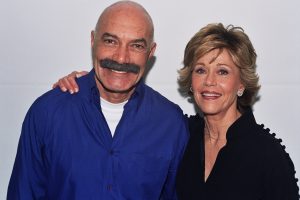What You Need to Know about 1928 as Movie Year
Sternberg Revisited
One of Josef oon Sternberg’s most accessible silent films, The Docks of New York was also one of the last films of the silent era.
The film stars established actors George Bancroft and Betty Compson (both Oscar nominees), as well as Olga Baclanova.
The tale was expertly adapted by Jules Furthman from John Monk Saunders story, “The Dock Walloper.” Furthmanm is credited with Sternberg’s most celebrated movies, Morocco (1930), Shanghai Express (1932), Blonde Venus (1932), all starring hs muse Marlene Dietrich.
Bancroft plays Bill Roberts, an American tramp steamer in New York harbor, just before the prohibitionera.
In the first scene, we see the bowels of the ship, with its coal stokers shutting down the furnaces, anticipating their shore leave for the night. The bullying third engineer Andy (Mitchell Lewis) warns the exhausted crew not to get drunk, or else they will be punished.
When Andy enters The Sandbar, dance-hall saloon, he unexpectedly encounters his estranged wife, Lou (Olga Baclanova), who, during his absence of years, has freely enjoyed male companionship.
Bill rescues a drowning prostitute, Mae (Betty Compson), who has leapt off the dock to end her sordid life. Ignoring the admonishment of his sidekick “Sugar” Steve (Clyde Cook), Bill carries the semi-conscious woman to a room above The Sandbar, indifferent to protests from the proprietor’s wife, Mrs. Crimp (May Foster).
There;s female camarderies, when Lou provides first-aid and revives Mae, whom she considers a fallen angel just like herself.
Infatuated with Mae’s physical beauty, Bill fetches her a beverage and gives her a pretty dress stolen from a pawn shop. Bill exhorts her to join him for the evening, and the distraught and vulnerable Mae consents.
Mae and Bill confess their sexual histories to one another, she with regret, he with masculine pride. To win Mae’s favors, Bill proposes and the couple takes their vows.
A murder ensues after Bill’s desertion of Mae, and Andy forces himself on her. The police suspect Mae of the murder, but Lou makes a confession and is arrested.
After the judge sentences Mae to jail, Bill confesses to the crime, pledging to reunite with Mae after he serves his sentence.
The movie benefited from the stylish cinematography of Harold Rosson, and Art director Hans Dreier, formerly of Germany’s UFA, who created the evocative sets. Dreier would subsequently oversee studio production design as head of Paramount’s art department.
The production was shot entirely at Paramount where sets were built to resemble the New York City waterfront.
The Motion Picture Producers and Distributors of America, formed in 1922 to regulate films’ contents. Surprisingly, prostitution was not explicitly barred as long as it was not forced, and sex work was not directly shown.
The film opened in New York City on Sept 16, 1928, at the Paramount Theatre. Previewed during the same week as Al Jolson’s eagerly anticuipated The Singing Fool, Sternberg’s film was passed over due to the advent of talking pictures.
The critic Andrew Sarris has lamented that Sternberg’s film “quickly vanished in undeserved oblivion, confirming Chaplin’s observation that the silent movies learned their craft just about the time they went out of business.”
The film is neither a crime thriller, nor a hardboiled noir, but rather an elegant and elegiac love story. The scholar Charles Silver ranked The Docks of New York as “the first film in which Sternberg’s visual genius was fully realized, making a deceptively simple film that combined spectacle and emotion.
Through the combination of camera movement (as opposed to montage) and mise-en-scène compositions that closely resemble German expressionist cinema”, Sternberg conveys a deeply felt emotional maturity.
Some critics consider the wedding scene as the film’s most memorable one. In the crowded bar, a preacher is dragged in to issue the vows. Bill takes his vows knowing that he cannot keep them, and Mae earnestly accepts hers while others mock. The sharp contrast between the barroom setting and the solemn wedding vows makes for an interesting paradox; one that runs throughout the film and focuses upon doomed companionship amidst the canvas of the docks of New York.
But for critic Sarris, it is the “sewing” scene that provides the movie’s key psychological moment: “Sternberg quietly dramatizes the emotional transition with a scene in which Compson sews Bancroft’s pocket after it has been torn by Bancroft’s jealous buddy (Clyde Cook). This pocket becomes the drama’s visual correlative, the battleground between conjugal feelings and fraternal loyalties. To emphasize this struggle, Sternberg shifts from objective to subjective camera viewpoint by showing the needle that Compson tries to thread through tears. When Bancroft take the needle away and threads it himself, the domestic irony of the situation takes on a new dimension.”
About George Bancroft (1882-1956)
The career of George Bancroft spanned 17 years, from 1925 to 1942. A star of pre-Code Hollywood, he is known as the tough guy lead in 4 Sternberg films, including Thunderbolt (1929), which earned him a Best Actor Oscar nomination. Later on, he was a supporting actor in such notable films as Capra’s Mr. Deeds Goes to Town (1936) and John Ford seminal Western Stagecoach (1939), both of which nominated for the Best Picture Oscar.
Cast
George Bancroft as Bill Roberts
Betty Compson as Mae
Olga Baclanova as Lou (Andy’s wife)
Clyde Cook – “Sugar” Steve (Bill’s buddy)
Mitchell Lewis as Andy (the third engineer)
Gustav von Seyffertitz as “Hymn Book” Harry
Critical Status
In 1999, The Docks of New York was included in the 25 pictures added to the National Film Registry of the Library of Congress, deemed “culturally, historically, or aesthetically significant.”










